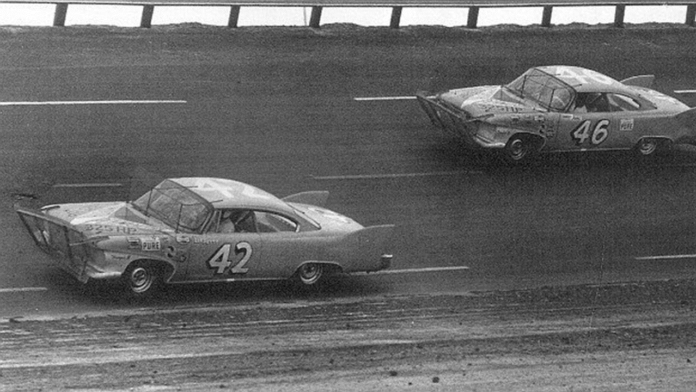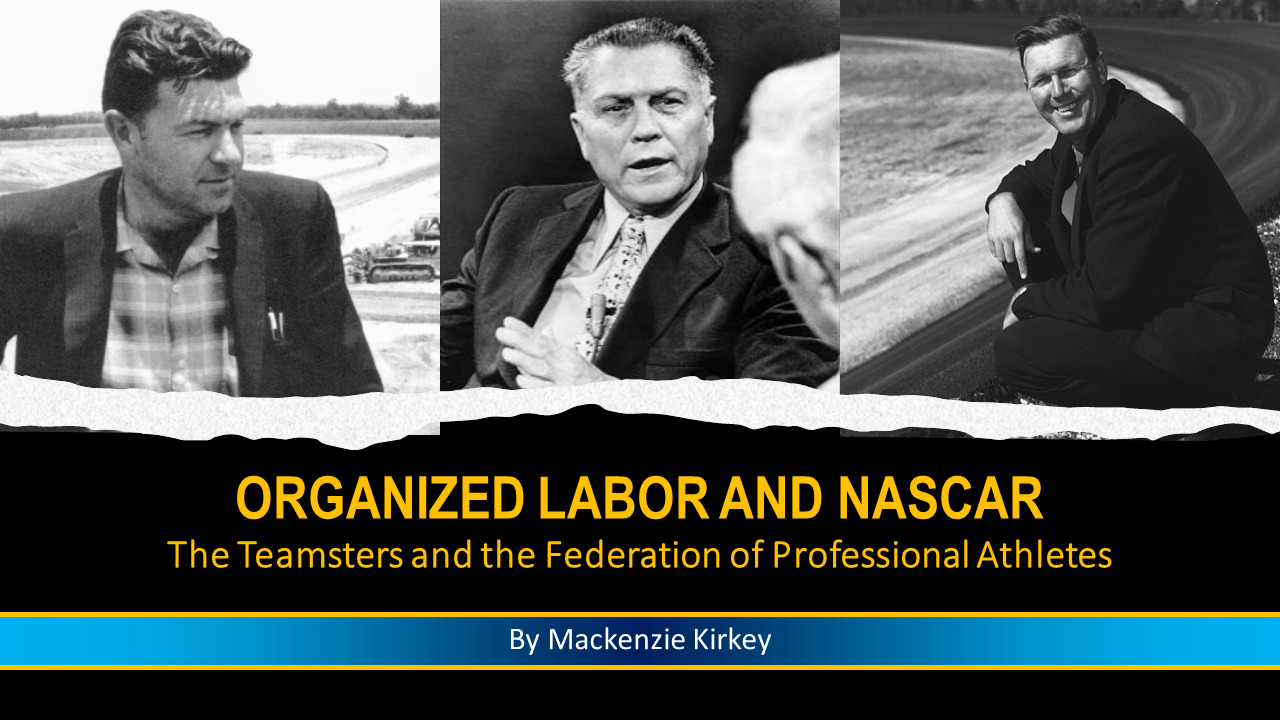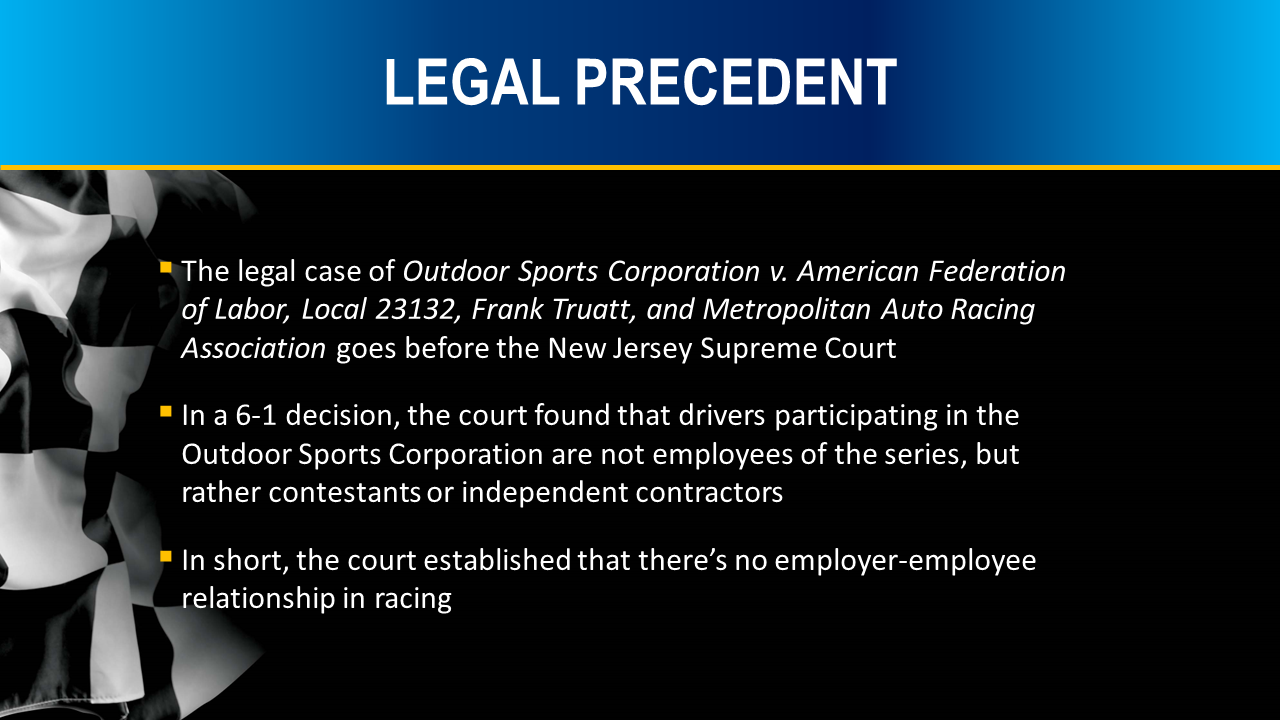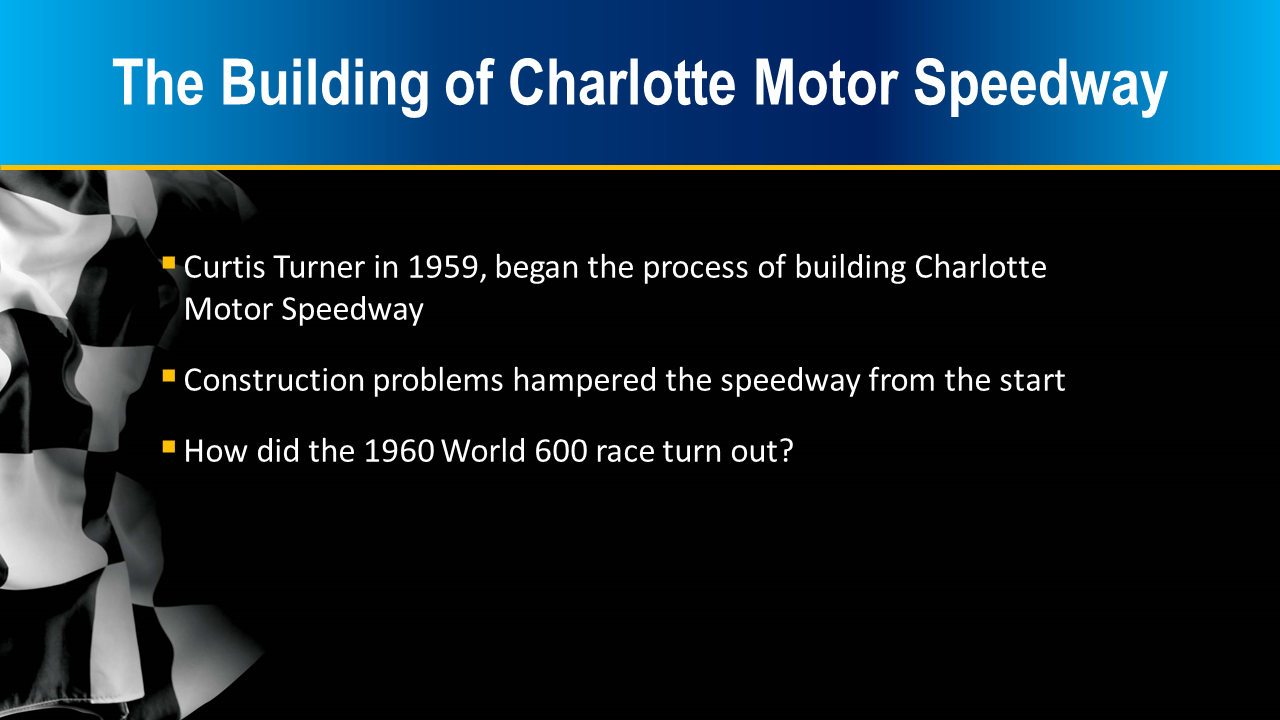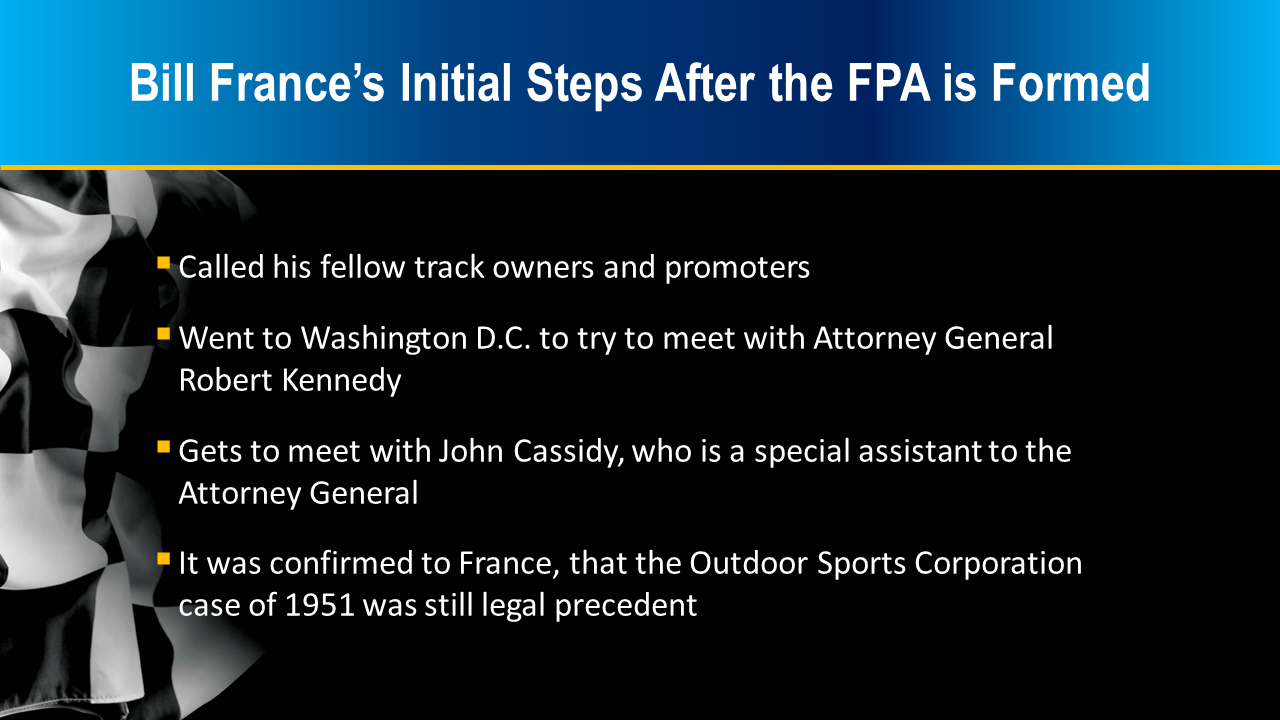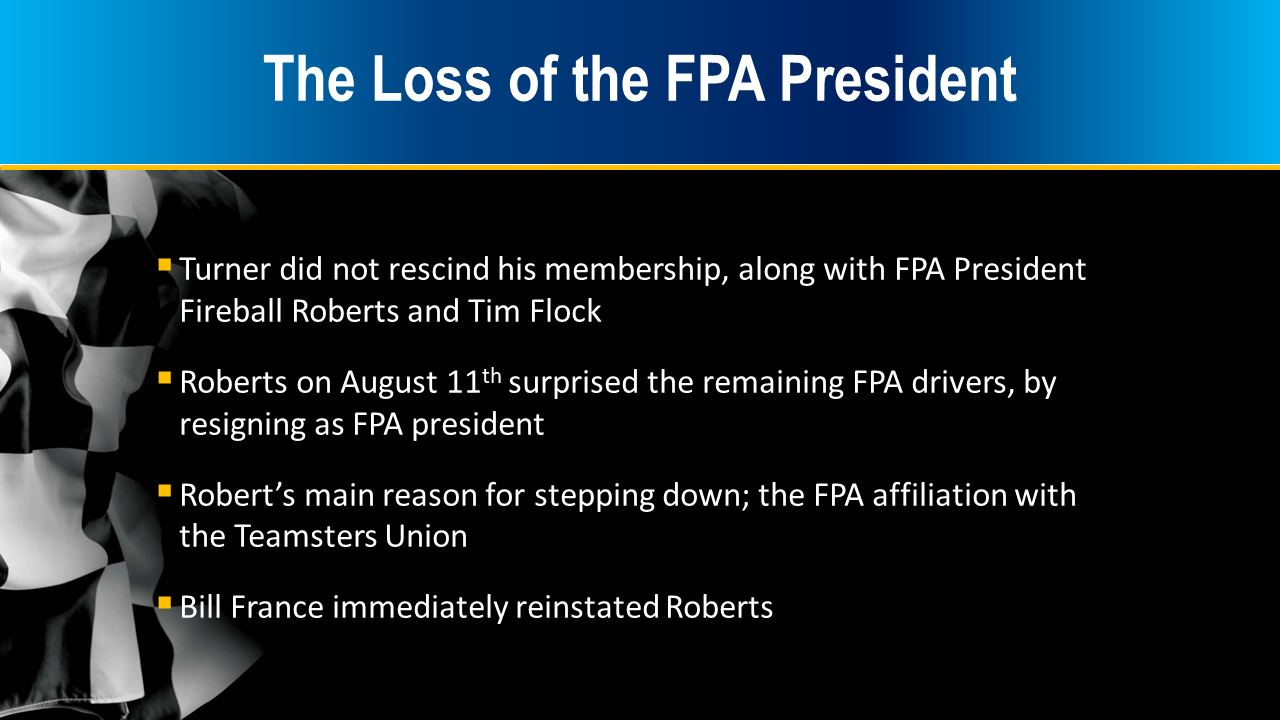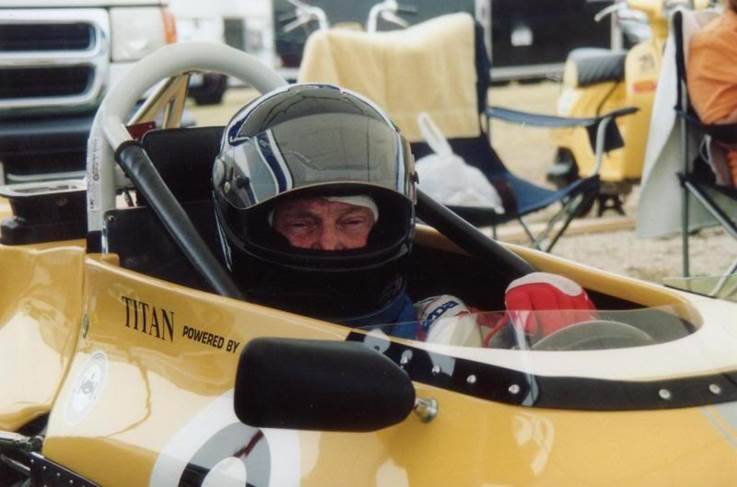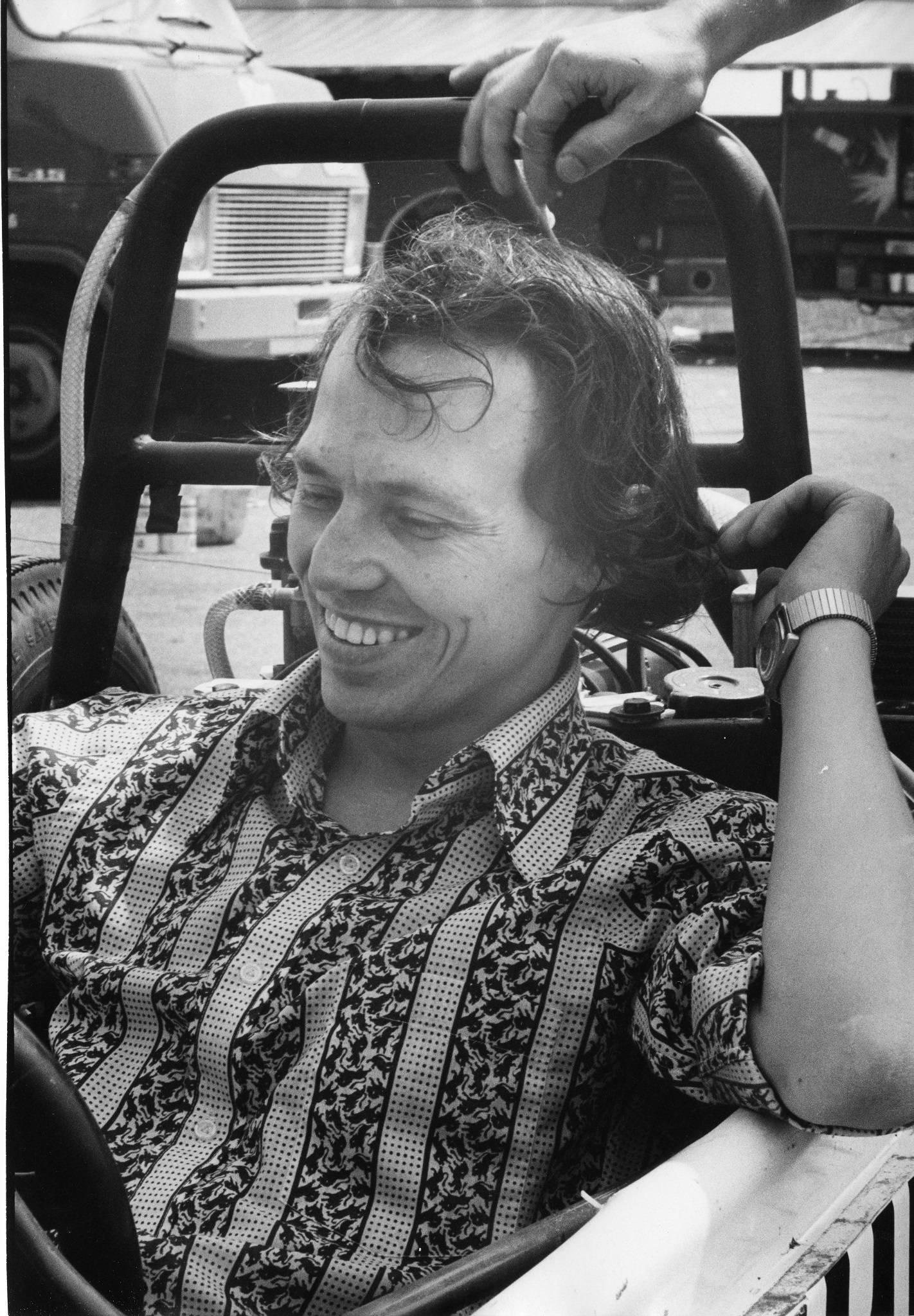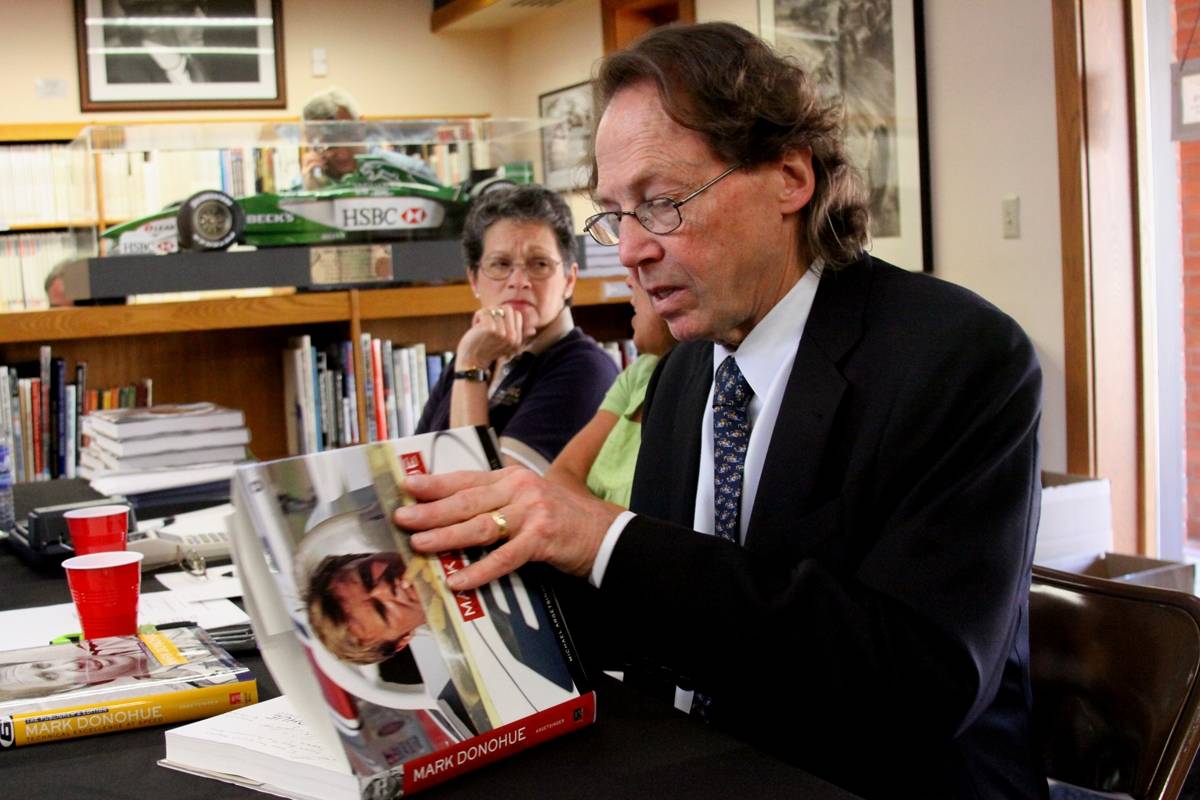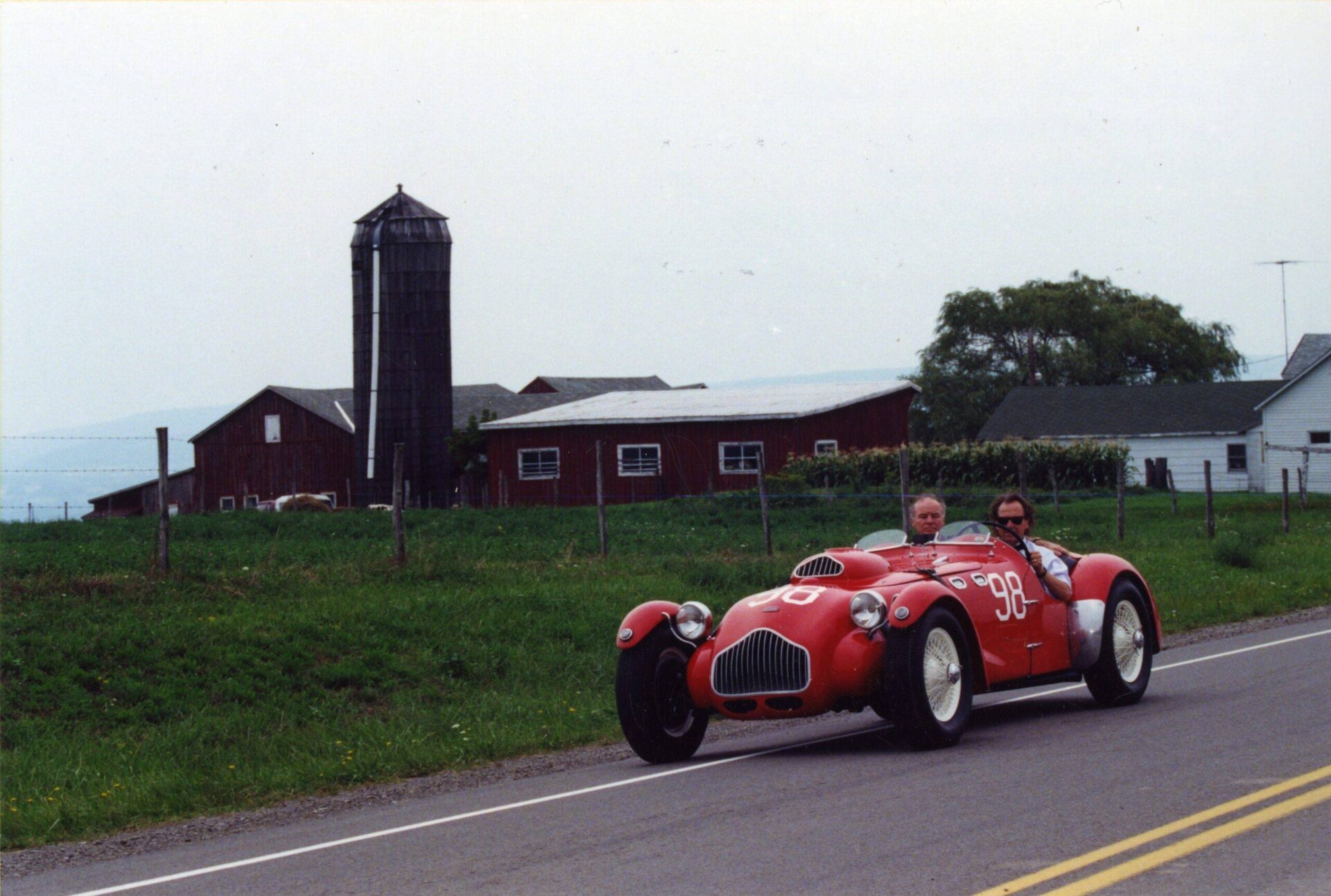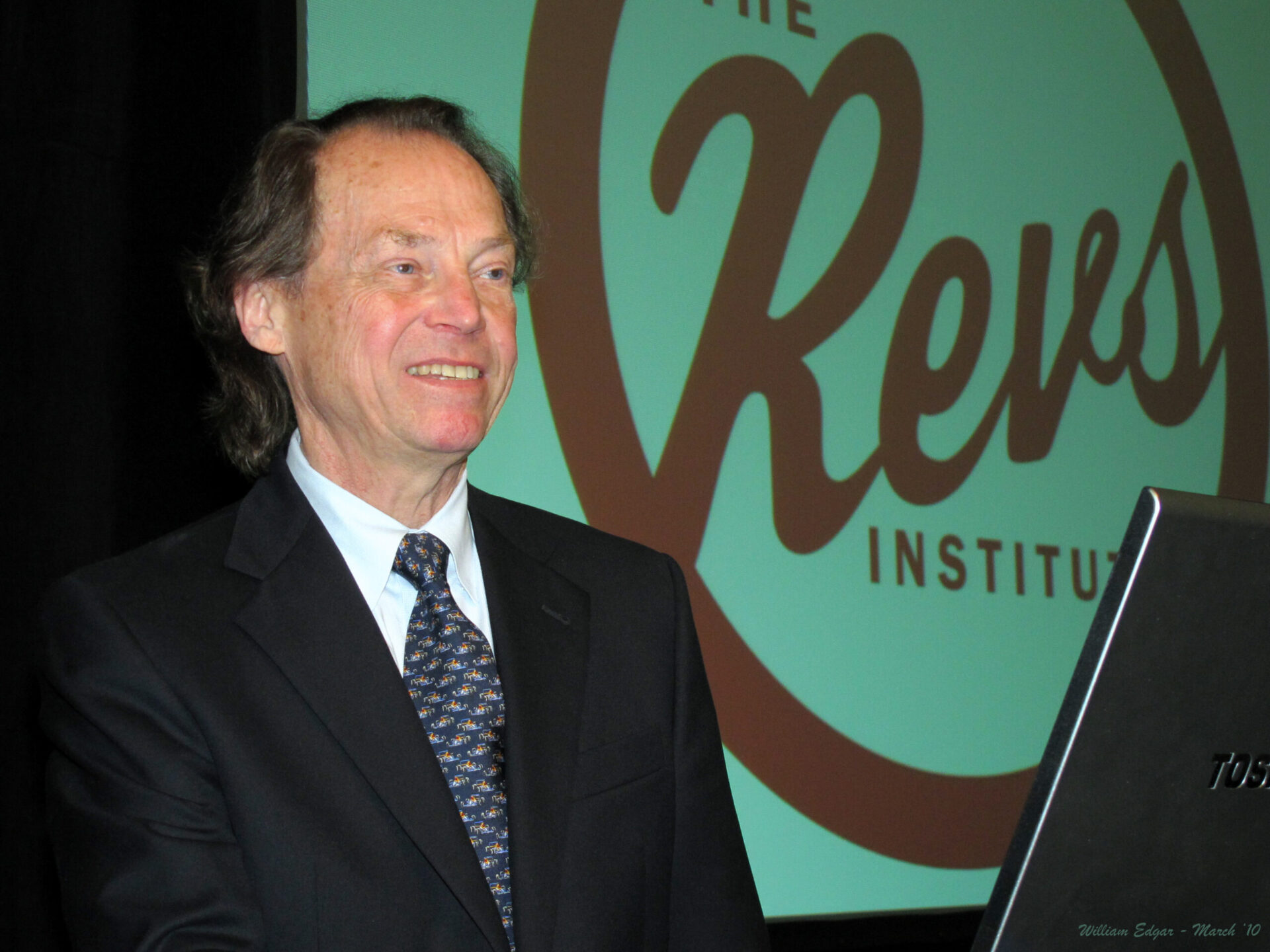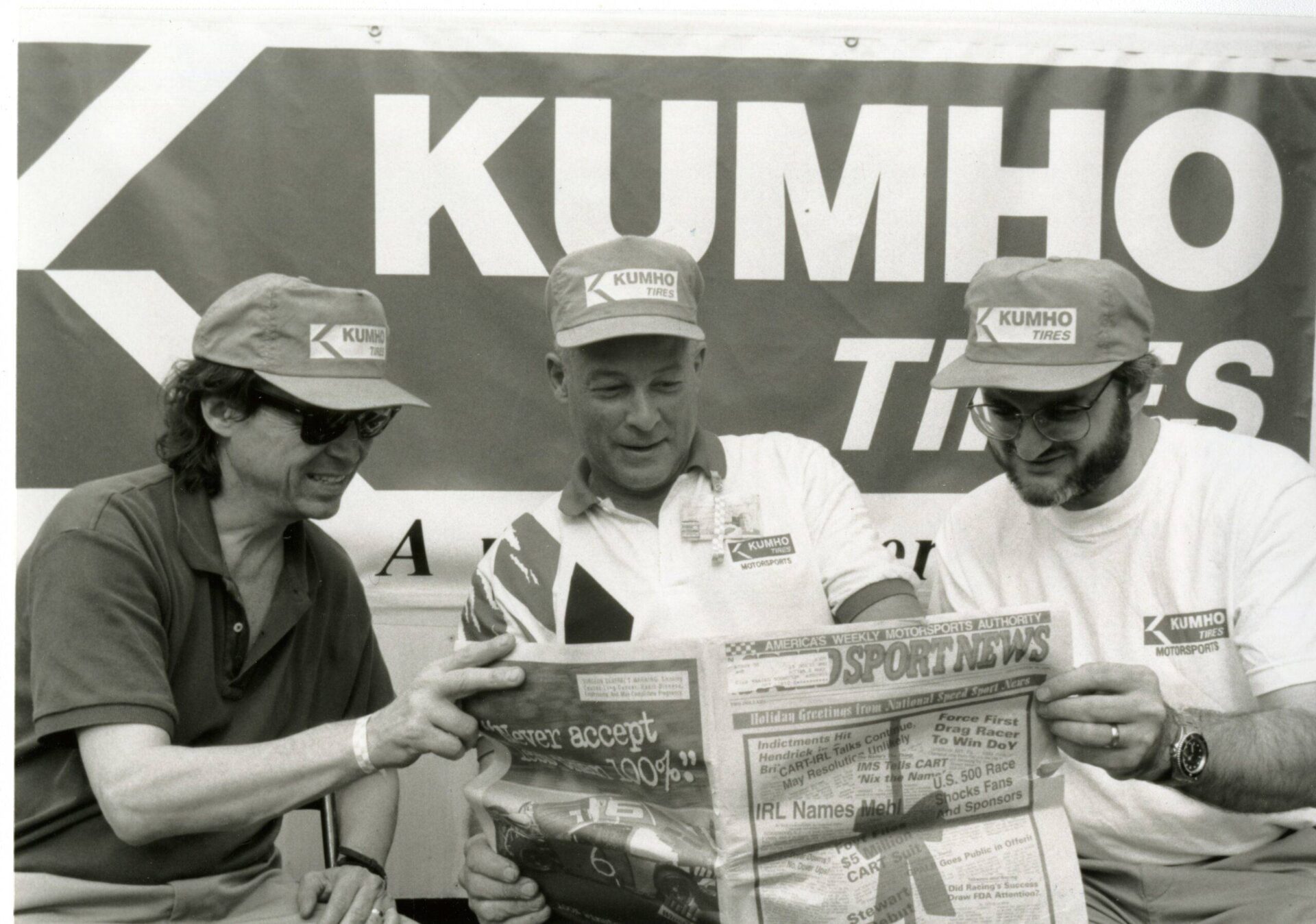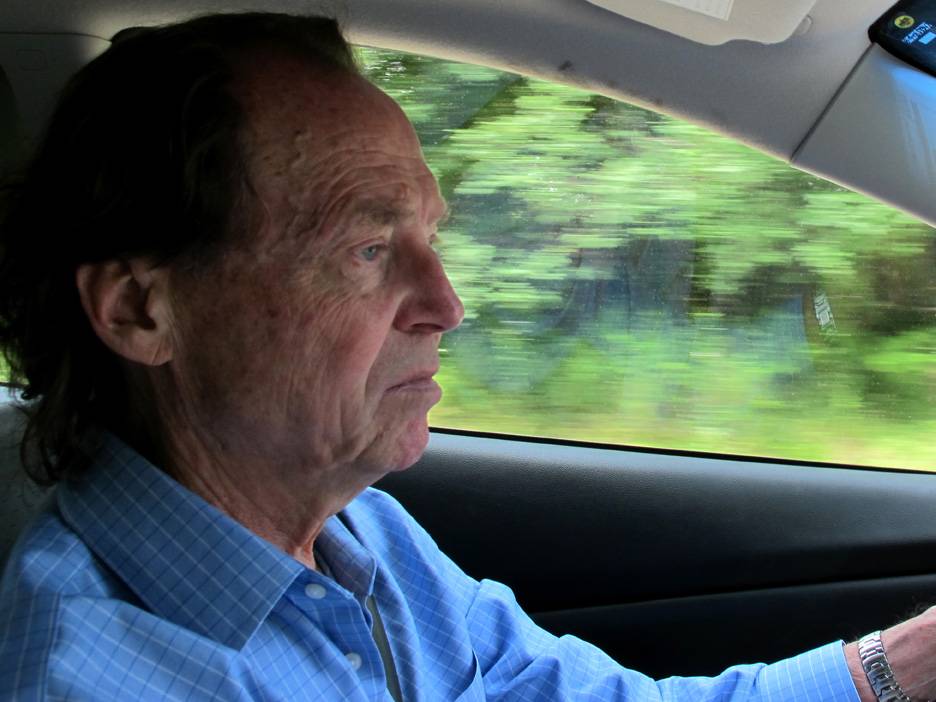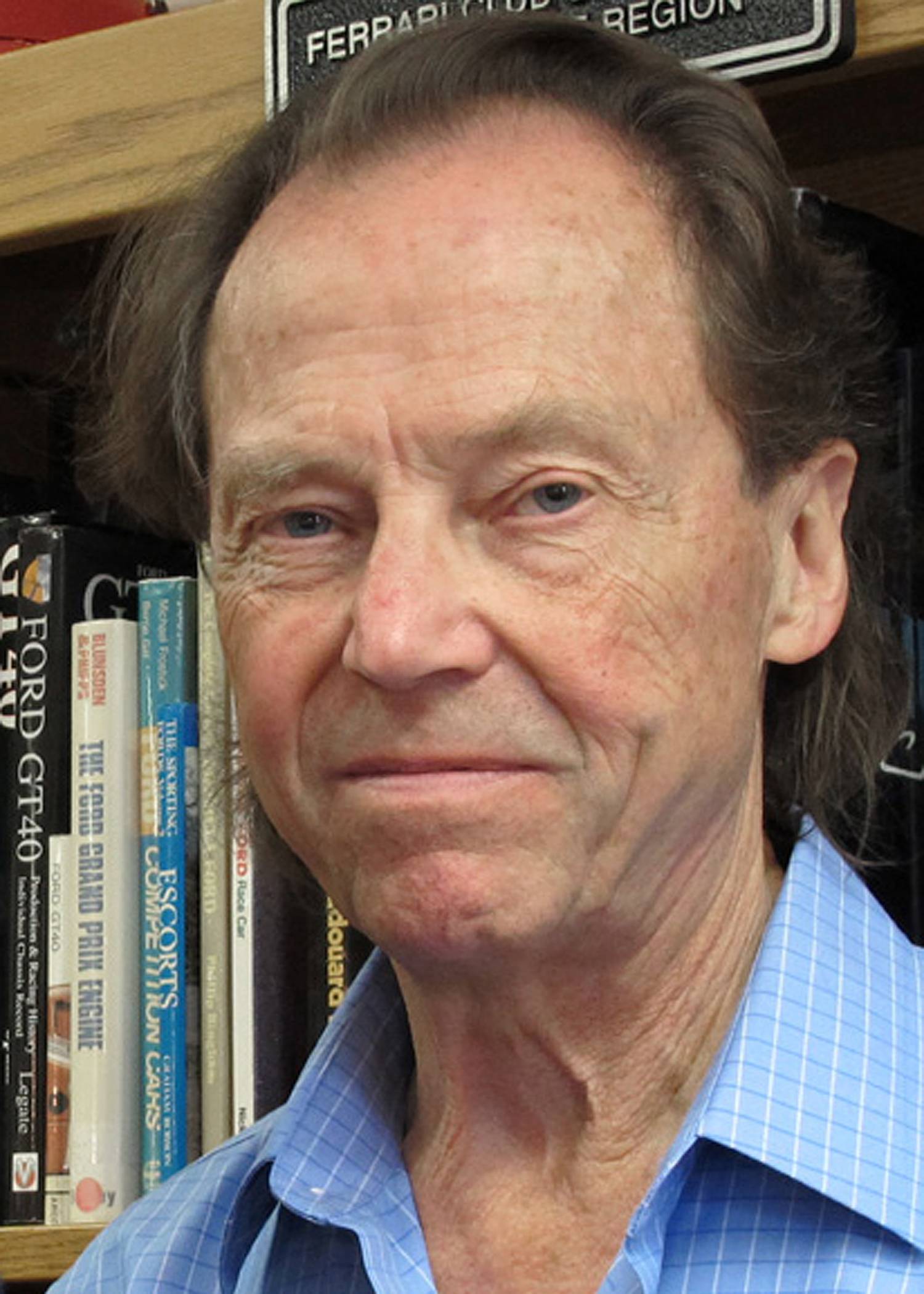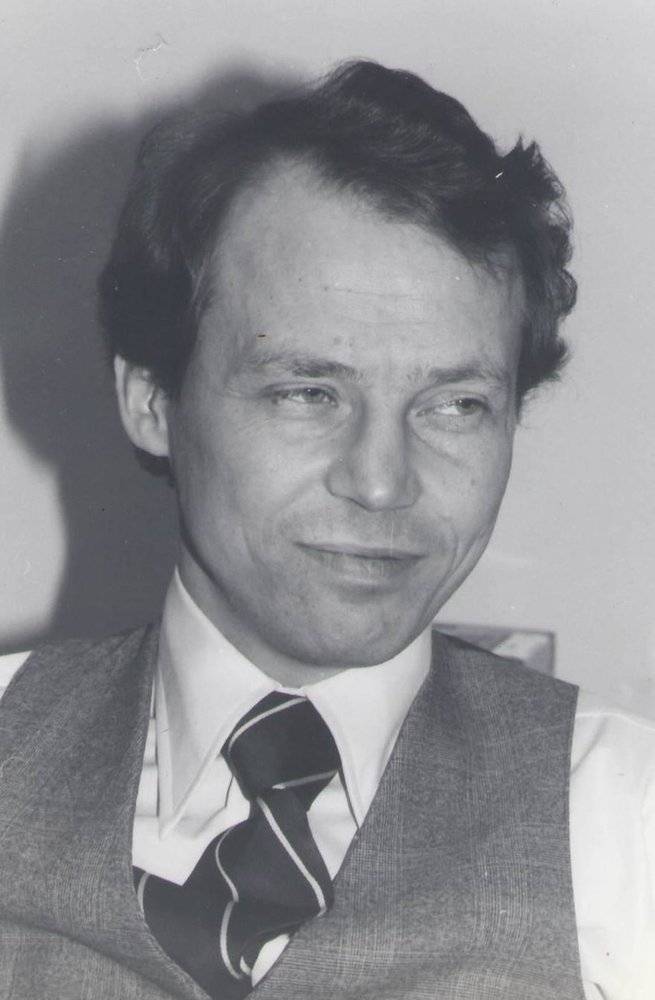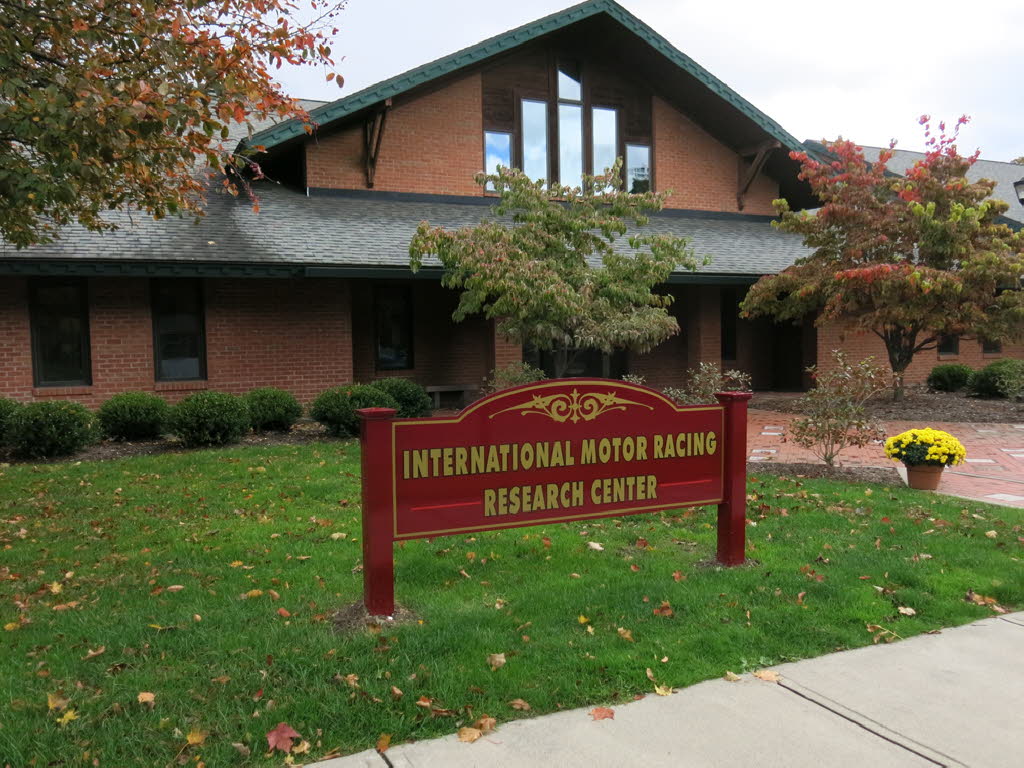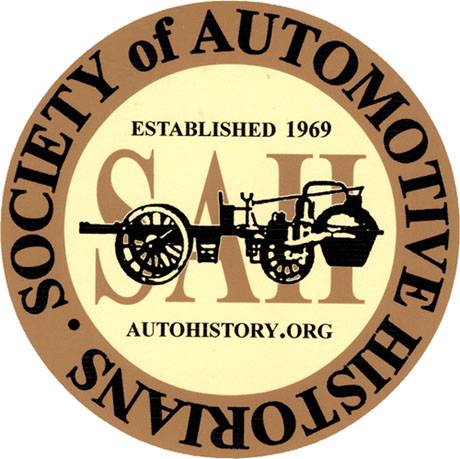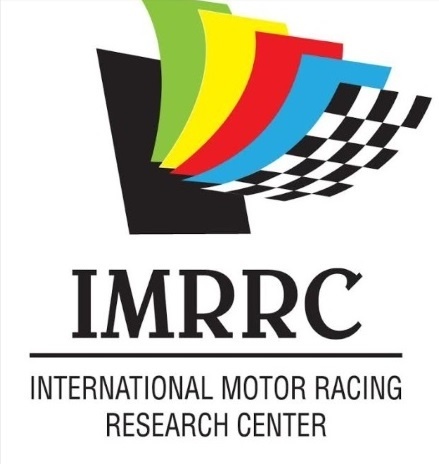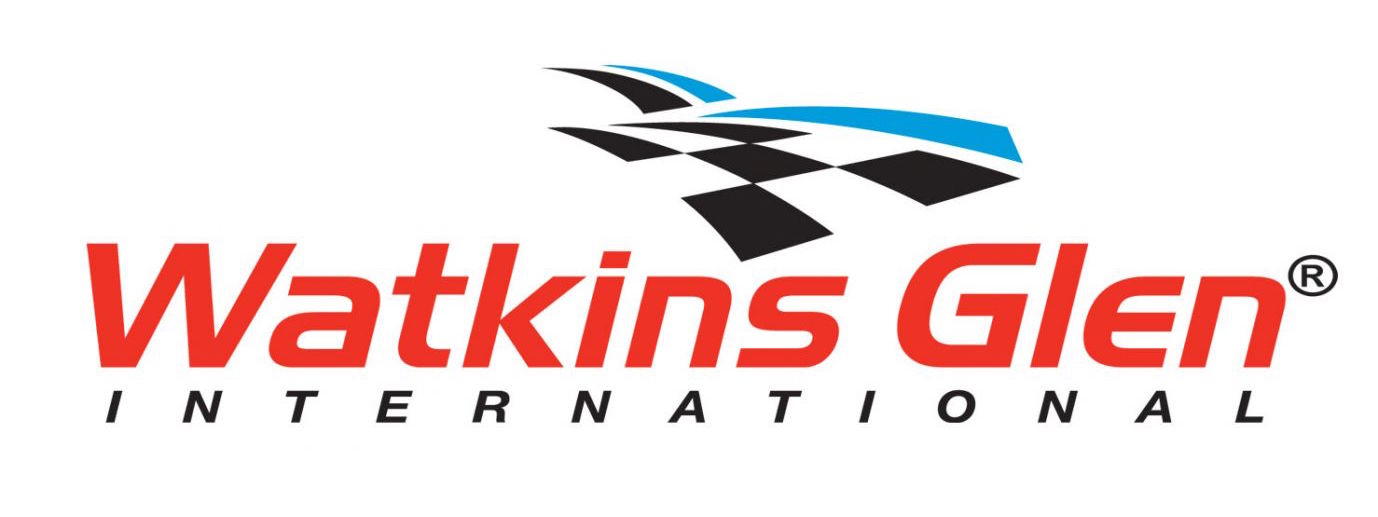Mackenzie Kirkey’s presentation focuses on NASCAR driver Curtis Turner, the efforts of the International Brotherhood of Teamsters to unionize NASCAR drivers in 1961, and the tactics used by NASCAR’s Founder and President Bill France Sr. to try and thwart their attempts.
Bio
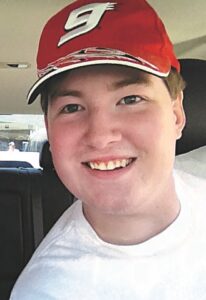
Mackenzie Kirkey received his MA in History from Brock University and his undergraduate degree in history from Bishops University.
Notes
Transcript
[00:00:00] Break/Fix’s History of Motorsports series is brought to you in part by the International Motor Racing Research Center, as well as the Society of Automotive Historians, the Watkins Glen Area Chamber of Commerce, and the Argettsinger family.
Organized Labor and NASCAR, the Teamsters and the Federation of Professional Athletes, by Mackenzie Kierke. McKenzie Kirkey received his master’s in arts in history from Brock University and his undergraduate degree in history from Bishop’s University. McKenzie’s presentation focuses on NASCAR driver Curtis Turner and the efforts of the International Brotherhood of Teamsters to unionize NASCAR drivers in 1961, and the tactics used by NASCAR’s founder and president Bill France Sr.
to try and thwart their attempts. Our next presentation kind of ties into some of the, uh, things we’ve talked about over the years, like with Buzz and some of the others who’ve talked about NASCAR. Well, good afternoon, everyone. My name is McKenzie, and today we’ll be talking [00:01:00] about organized labor and NASCAR, the Teamsters, and the Federation of Professional Athletes.
And as Buzz McKim had already went a little bit this morning, France privately owned the company that was a management control system. Basically, France had say in everything that NASCAR had to do, whether it was guarding purses, driver points, schedule, etc. But one thing that he did was disqualify any driver that did not specify his rules book and only his rule book, which he had sole control over.
And this happened in 1949 with the first Grand National Race, which we know today as the NASCAR Cup Series. When driver Glenn Dunaway was disqualified by France for having an illegal piece of wedge in his springs that helped the car turn better in the corners. Now back then, there was no appeals board for NASCAR, so whatever France said was final.
Except, Dunaway’s owner, Hubert Westmore, decided to sue NASCAR for 10, 000 to have Glenn Dunaway reinstated as the race winner. The first true case of someone going up against Bill France and testing his authority. In early 1950, Judge Johnson J. Hayes sided with [00:02:00] NASCAR saying that France had the right to disqualify the race car drivers that did not fit specifications according to the technical specifications of the rules book.
A major victory for France in the sense that not only was his rule book legal precedent, but also his decision making as well. Bill France Senior, if he caught you racing in any other series besides his own, he would strip you of your driver points during the season. Happened to Curtis Turner, the aforementioned Lee Petty.
In 1950, happened to Red Byron twice of the year, had been the previous champion. But there’s also one key legal case. In 1951, That would be key not only for the start of the FPA, but ultimately its end. And this was the legal case of the Outdoor Sports Corporation. So in a 6 1 rule, the New Jersey Supreme Court had said that the drivers participating in the series We’re not employees of this series, but rather contestants or independent contractors.
In short, the court establishes there’s no employer employee relationship in any racing series. Come 1961, the founding of the [00:03:00] FPA and the latter stages of it. So skipping a little bit ahead to 1959, Curtis Turner decides he wants to build the Charlemotor Speedway, a dream of his to own and operate. He even got Bill France Sr.
to sanction a bunch of NASCAR races starting in 1960, the most prominent being the World 600, on Memorial Day weekend, which today is known as the Coca Cola 600. Well, unfortunately for Turner, construction problems hampered the track from the very beginning. First and foremost, the land that was being constructed on was under solid granite.
Construction costs went for the roof overnight. It also did not help efforts that over three feet of precipitation fell in the fall and winter of 1959 1960 alone. Despite enacting 12 hour workdays for the construction workers, The track could not have the race ready for May of 1960, it got pushed back three weeks, in large part because half the track wasn’t even fully paved yet, and they only got it done, the paving job, within about a day or two of the race actually ready to go.
So how did the World 600 turn out in 1960? [00:04:00] It was a complete disaster. The fact is, if you don’t let the pavement harden, it’s going to create the potholes, and the problem was that… Chunks of asphalt were going so bad that they threatened to go through the windshields of the drivers themselves and even the grills of the cars that would pretty much kill the motor.
Out of the 60 drivers that started the race, only 18 finished. It did not help things that Bill Francine disqualified Lee Petty, Richard Petty, and Junior Johnson for what he called illegal pit entry and stripped all their prize money. Things could not have turned out worse for Curtis Turner. And the track floundered with attendance and upkeep costs like the unforeseen repaving the track and even payable costs.
So by the time we get to June of 1961, the Charlemore Speedway is at a crossroads. It’s facing over 800, 000 in debt. And the track board is given an ultimatum, remove Curtis Turner immediately from all positions, whether it’s the board, the presidency, or the track will be foreclosed on. So, that’s exactly what happens.
And now Turner, in his mind, after being forced to resign as [00:05:00] president and bloated off the board directors has one goal in mind, regain control of the track in any way he could. And he only saw one way to do so, get the debts paid off that the track owed. And this is where the Teamsters Union comes in.
Ironically, before Turner was even ousted, his chief financial officer, William Rabin, had offered him a meeting with the vice president of the Teamsters Union, Harold Gibbons, to talk about the problems of the track, to see if he’d be interested in getting a loan in exchange for unionizing himself and his fellow drivers.
Turner was just too proud of a guy to do so. So he rejected it thinking that he and he alone could solve the track debts problems. What ended up happening was Turner at this point realized I need to go see the Teamsters again See if the offer still stands and it did. So Kurtis Turner along with his fellow driver Glenn Farlbaugh Roberts One of the most respected drivers of the early NASCAR days Decided to go to Chicago to meet with the Teamsters in an early August hampered out the agreement for an 850, 000 loan for unionizing as many NASCAR drivers as possible [00:06:00] and with the understanding that this would have to be formally in public recognized by NASCAR Once the meeting is done, Turner quickly goes to Bowman Gray Stadium on August 5th to talk to his drivers to see if they’d be interested.
And surprisingly, there were quite a few. Now, why did the drivers be so interested in the FPA? Well, they saw a few reasons. One, pay scale wasn’t right. They thought that the pay themselves that they were getting in the rice purses were more like the late 40s, early 50s standards. By the time you get to 1961, NASCAR has a longer schedule, more diverse races, higher paying races.
And they would get fans not only for the races themselves, but for practicing and qualifying as well. So the tracks would make more money, and the drivers didn’t see that trickling down to themselves. Also, once you retire from NASCAR, there was no retirement system, you had no pension, you had no benefits.
But above all, the drivers saw one thing. They saw Bill Francis having all decision making in any NASCAR decisions, and they had no say. And they saw this union as a potential for them to finally get in voice of NASCAR’s decision making. [00:07:00] So, Once they’re doing that right under Bill France Senior, do you think he’s going to just let it go?
Of course not, he doesn’t. First thing he does on August 6th through the 7th is call his fellow track owners and promoters to see if not only are they behind him, but behind him for one particular reason. A ban. France wanted to ban any FPA driver competing in any of his races at any of the tracks and wanted to make sure the tracks themselves…
When in force is spanned by escorting any drivers from the property and seizing the last car licenses if it came to that. But you also want to do one other thing. Go to Washington DC. In early 1961, who’s the one guy you want to see in Washington DC if you have a teamsters Jimmy Hoffa problem?
Specifically someone who’s confronted Hoffa maybe in the televised, not so much debates, but grillings. That’s right, Attorney General Robert F. Kennedy. And does France have an appointment to go see him? Of course he doesn’t. It’s Bill France. So he goes right to his office and, well, France can’t see him at the moment.
So he sends him to one of the special assistants to the Attorney General, John Cassidy. But before [00:08:00] he does, France calls Cassidy and lets him know what’s going on. Tells him who France is, what his organization is, and tells him Jimmy Hoffa and the team should try and take it over. We cannot let that happen.
Do what you need to do to help him. But also, before France left Washington, he wanted to check one important thing. The 1951 Supreme Court case by the state of New Jersey was still legal precedent. That the drivers themselves were not employees of racing series, but rather contestants or independent contractors.
And he got that reassurance. With all that said, on August 9th, Bill France leaves Washington, D. C. and goes right to Bowman Gracie in the next race on the schedule. Well, on the way down, it did not help things that the Teamsters had publicly proclaimed in the Charlotte Observer. They had taken over NASCAR by signing up the majority of drivers.
That did not help Bill France feel any better. Bill France, before the race, quickly meets with the drivers and lets it know. Any driver after tonight’s race that’s an FBA member will be banned from NASCAR for life. Yes, he had a gun. Yes, he showed it and threatened them. But he also reminded them a few things.[00:09:00]
Any support you would get from Detroit will be taken away if you stay with the union. If you have any, say like any workers, like a mechanic, now you’re gonna have to pay them overtime. Time and a half on Saturday, double time on Sunday. And he offered the drivers to sign these cards, renounce your union membership, pledge your loyalty to NASCAR.
No worries, I’ll even do something that’s gonna really make you happy. I’m gonna offer you a committee. Ned Jarrett, you can lead it and we’re going to seek to improvements in NASCAR. If you have any grievances against me or any questions, any concerns, go to this committee. After all that’s done, did it convince the drivers to change their mind?
Well, it did. And why did the drivers abandon this union so quickly? France had offered to address their main grievance, have a grievance committee listen to all the complaints or whatnot, and maybe have a say in NASCAR decision making. But by the time you get to early 1961, NASCAR was no longer a hobby.
NASCAR at this point, with their extended schedule of high paying races, drivers did not work in the mills Monday through Friday and go race on the weekends. NASCAR was their livelihood. A [00:10:00] way that they made a living for their families. That’s the way the NASCAR was to them. And also, we have to remember, Bill France had a monopoly on 7 star car racing.
You just couldn’t go to any other series, make the same amount of money, make a living for your family. France had control, whether you owned the racetracks or sanctioned races with other track promoters who were behind them. Remember, the reason track promoters were behind him too is, these are the big races they get every year.
This is where the most money is made, for the tenants, for gate receipts. The drivers had nowhere else to race. And, we cannot forget about the perception of the Teamsters Union itself. Not just between Jimmy Hoff and Robert Kennedy. Or as Bill France liked to call them, gangsters. Or thugs. Or corrupt. The good news for Kurt Turner is he still has Fireball Roberts, who is the FPA president.
But, two days after France met with the drivers, Roberts surprises everyone and renounces his union membership. He resigns as president. Of course, Bill France welcomes him back right away. Now, Roberts was asked, why did you abruptly resign your membership? And it goes back to the very last point, the [00:11:00] perception of the Teamsters.
He sees the Teamsters Union doing more harm than good when it came to NASCAR racing. What does Curves Turner think the next move is? Well, I got myself, I still got Tim Flock. Let’s see if France really is gonna enforce this ban. You know, he’s just all talk. He’s not gonna do anything. Let’s go to like a modified race, one of the lower divisions in NASCAR in Roanoke, Virginia.
Is he really gonna do anything? Track officials are waiting for him. As soon as Turner and Flock get there, they’re confronted, they have their NASCAR licenses seized, they are banned from the track. Just a couple days later, on the 13th of August, the next Grand National Race, or Cup Race, is held in Nashville, with not a single FPA driver racing.
Just what Bill France said would happen. So at this point, Turner only sees, he only has one car left in his deck. And that is to sue Bill France and NASCAR to be reinstated. And this happens in September 1961. NASCAR simply brings up the legal precedent of the 1951 case. Before you know it, early 1962, Circuit Court Judge Robert Winfield agrees and tosses the lawsuit [00:12:00] out of court.
And Turner’s Turner and Tim Flock are banned, at least for the time being. Why didn’t the team try harder to save the union or get more involved? They had a lot of other problems going on with them. First and foremost, In Cincinnati, in late August of 1961, they have four of their own branches trying to defect to the AFL CIO.
And not just there, but in St. Louis, and San Francisco, and elsewhere found in the country. Jimmy Hoffa did not want to let that happen. He personally flew to these places to make sure that he would convince them to stay, or maybe in his words, remind them who’s boss. But also the Teamsters realized the union itself was not worth saving.
You had gone from maybe about 10 to 12 drivers on the August 5th to down to two drivers. At the end, the Teamsters realized they had violated one of the very simple rules of the Hart Taftley Act, Section 302. You cannot offer a person or a group of people, in this case Turner and Roberts, alone in exchange for forming a union that you [00:13:00] would be affiliated with.
It’s against the law. So they realized after they had sued NASCAR that this was not going to work. And that’s why the Teamsters themselves did not get more involved between having problems with their own union members and the fact they realized this lawsuit was not going to work. FPA failing, Kurtz Turner never regained control of Shubhamer Speedway.
An ironic twist of fate? Bill France maintained full control and power of NASCAR because the committee he had set up. He didn’t really set it up to, you know, like, actually do anything. He made sure that he picked Ned Jarrett. Someone who was, as they say, his nickname, Gentleman Ned. Someone who is respected, but wouldn’t be like Kurtz Turner.
He wouldn’t form his own driver’s union or raise a fuss. He would just be told what to do, and simple as that. So, as Ned Jarrett said, the committee met for a couple of years and then quietly dissolved. France had quashed the union. And had gained full control and say of NASCAR decision making. And the Teamsters themselves.
Unfortunately, for their decision not [00:14:00] to fully support the union, focus on more important things, which might have been the good point at the time, led to its demise. In fact, the Teamsters are so embarrassed by this, that when I did my research at the Teamsters archives in Washington, D. C., I could not find anything on this.
And I asked the person who was the archivist, why is this the case? Why is there no documentation? He said, well, since this was such a failure, and a bit of a small black guy on the teamsters, any documentation they had at the time was destroyed. They wanted this erased from memory. That’s how bad it was for them.
That was a very good explanation. One of the better ones I’ve heard. Nothing against you Buzz, but that was really good to the point. We’re going to take some questions right now. I was on the board of International Speedway Corporation from 1982 to about 10 years. John Cassidy was their go to Washington attorney, even in those days.
So he had a long tenure working with the France family [00:15:00] after he left and went into private practice. Did you ever look at 1977? Jeff Bodine and Jack Housby and their efforts to get Teamsters as a sponsor. Yeah, you ought to look into that one, too. It’s pretty interesting. Any news about what ever happened to Jimmy Hoffa?
I was hoping you’d ask. I was a Mark Scorsese fan with the movie The Irishman. I have to believe that you cannot find the body of Jimmy Hoffa. If the movie is correct, I believe it is, there is no body. He was whacked, and then they pretty much incinerated him. Turned him into ashes, so I don’t think you’re gonna find a body.
Thank you everyone.
This episode is brought to you in part by the International Motor Racing Research Center. Its charter is to collect, share, and preserve the history of motor sports spanning continents, eras, and race series. The Center’s collection embodies the speed, drama and [00:16:00] camaraderie of amateur and professional motor racing throughout the world.
The Center welcomes serious researchers and casual fans alike to share stories of race drivers, race series, and race cars captured on their shelves and walls and brought to life through a regular calendar of public lectures and special events. To learn more about the Center, visit www. racingarchives.
org. This episode is also brought to you by the Society of Automotive Historians. They encourage research into any aspect of automotive history. The SAH actively supports the compilation and preservation of papers. Organizational records, print ephemera and images to safeguard, as well as to broaden and deepen the understanding of motorized wheeled land transportation through the modern age and into the future.
For more information about the SAH, visit www. autohistory. org.
We hope you enjoyed another awesome episode of Brake Fix Podcast brought to you by Gran Touring Motorsports. [00:17:00] If you’d like to be a guest on the show or get involved, be sure to follow us on all social media platforms at GrandTouringMotorsports. And if you’d like to learn more about the content of this episode, be sure to check out the follow on article at GTMotorsports.
org. We remain a commercial free and no annual fees organization through our sponsors, but also through the generous support of our fans, families, and friends through Patreon. For as little as 2. 50 a month, you can get access to more behind the scenes action, additional Pit Stop minisodes, and other VIP goodies, as well as keeping our team of creators Fed on their strict diet of fig mutants, gumby bears, and monster.
So consider signing up for Patreon today at www. patreon. com forward slash GT motorsports, and remember without you, none of this would be possible.[00:18:00]
Livestream
Learn More
Consider becoming a GTM Patreon Supporter and get behind the scenes content and schwag!
Do you like what you've seen, heard and read? - Don't forget, GTM is fueled by volunteers and remains a no-annual-fee organization, but we still need help to pay to keep the lights on... For as little as $2.50/month you can help us keep the momentum going so we can continue to record, write, edit and broadcast your favorite content. Support GTM today! or make a One Time Donation.
This episode is sponsored in part by: The International Motor Racing Research Center (IMRRC), The Society of Automotive Historians (SAH), The Watkins Glen Area Chamber of Commerce, and the Argetsinger Family – and was recorded in front of a live studio audience.
Other episodes you might enjoy
Seventh Annual Michael R. Argetsinger Symposium on International Motor Racing History
The International Motor Racing Research Center (IMRRC), partnering with the Society of Automotive Historians (SAH), presents the Seventh Annual Michael R. Argetsinger Symposium on International Motor Racing History. The Symposium established itself as a unique and respected scholarly forum and has gained a growing audience of students and enthusiasts. It provides an opportunity for scholars, researchers and writers to present their work related to the history of automotive competition and the cultural impact of motor racing. Papers are presented by faculty members, graduate students and independent researchers.
The history of international automotive competition falls within several realms, all of which are welcomed as topics for presentations, including, but not limited to: sports history, cultural studies, public history, political history, the history of technology, sports geography and gender studies, as well as archival studies.
The symposium is named in honor of Michael R. Argetsinger (1944-2015), an award-winning motorsports author and longtime member of the Center’s Governing Council. Michael’s work on motorsports includes:
- Walt Hansgen: His Life and the History of Post-war American Road Racing (2006)
- Mark Donohue: Technical Excellence at Speed (2009)
- Formula One at Watkins Glen: 20 Years of the United States Grand Prix, 1961-1980 (2011)
- An American Racer: Bobby Marshman and the Indianapolis 500 (2019)


